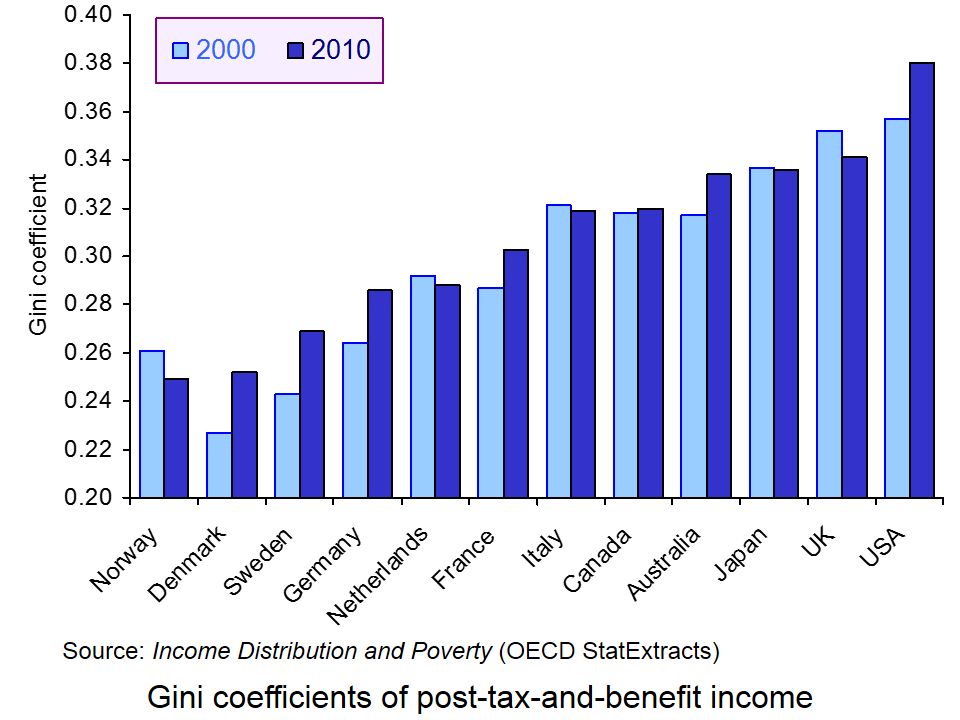 Growing inequality of income and wealth is a common pattern throughout the world. In the boom years up to 2008, the rich got a lot richer, but at least those on low incomes generally saw modest rises in their incomes. Since 2008, however, the continually widening gap between rich and poor has seen the poor and many on middle incomes getting absolutely poorer.
Growing inequality of income and wealth is a common pattern throughout the world. In the boom years up to 2008, the rich got a lot richer, but at least those on low incomes generally saw modest rises in their incomes. Since 2008, however, the continually widening gap between rich and poor has seen the poor and many on middle incomes getting absolutely poorer.
The problem is particularly acute in the USA. Indeed, in his 2012 State of the Union address, President Obama said that it was the ‘defining issue of our time.’
No challenge is more urgent. No debate is more important. We can either settle for a country where a shrinking number of people do really well, while a growing number of Americans barely get by. Or we can restore an economy where everyone gets a fair shot, everyone does their fair share, and everyone plays by the same set of rules.
The good news for the poor in the USA is that at last their incomes have stopped falling, thanks to stronger economic growth. But their share of the growth in GDP is tiny.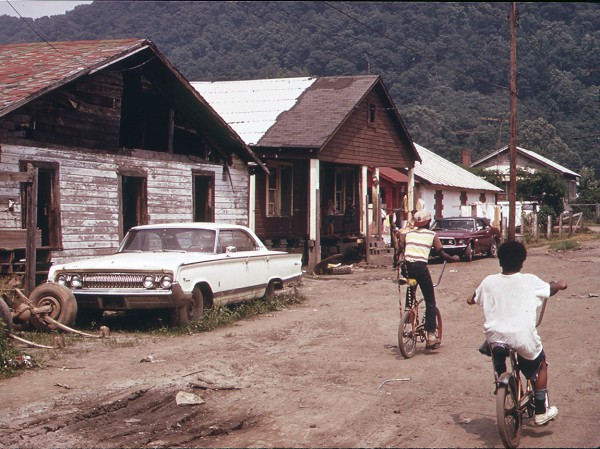 As The Economist article states:
As The Economist article states:
The main message is a grim one. Most of the growth is going to an extraordinarily small share of the population: 95% of the gains from the recovery have gone to the richest 1% of people, whose share of overall income is once again close to its highest level in a century. The most unequal country in the rich world is thus becoming even more so.
Apart from the ethical question of whether it is desirable for a society, already highly unequal, to become even more so, there is the question of whether this growth in inequality threatens economic recovery. Joseph Stiglitz argues that the rich have a low marginal propensity to consume and that this is threatening recovery.
Then there is the question of investment. Because most Americans have not seen any significant rise in incomes, it is easy for them to believe that the country cannot afford to invest more. And certainly it is difficult to persuade people that higher taxes are warranted to fund education, infrastructure or research.
The following articles consider the problem and its implications and look at various policy alternatives.
Articles and videos
Inequality: Growing apart The Economist (21/9/13)
What is income inequality, anyway? CNN, John D. Sutter (29/10/13)
Inequality is literally killing America Press TV (22/11/13)
It’s Economic Inequality Stupid – What to Do About the Biggest Crisis Facing America Huffington Post, Robert Creamer (14/11/13)
US Inequality Now Literally Off the Chart Truthout, Salvatore Babones (8/6/13)
Inequality moves to the front line of US politics Financial Times, Richard McGregor (20/11/13)
 Is wealth inequality slowing growth? BBC News, Linda Yueh (21/11/13)
Is wealth inequality slowing growth? BBC News, Linda Yueh (21/11/13)
American Inequality in Six Charts The New Yorker, John Cassidy (18/11/13)
 Income Inequality ‘Profoundly Corrosive’ Wall Street Journal, Larry Summers (19/11/13)
Income Inequality ‘Profoundly Corrosive’ Wall Street Journal, Larry Summers (19/11/13)
21 Charts On US Inequality That Everyone Should See Business Insider, Gus Lubin (12/11/13)
Data, information and reports
Income inequality in the United States Wikipedia
Inequality Data & Statistics Inequality.org
Income Main United States Census Bureau
World of Work Report 2013: Snapshot of the United States ILO
World of Work Report 2013 ILO
StatExtracts OECD (Search for Gini)
Questions
- How may income inequality be measured?
- Comment on the Gini coefficients in the above link to the StatExtracts site.
- Why has inequality grown in the USA?
- The Swiss have just voted in a referendum to reject a proposal to limit executive pay to 12 times that of the lowest paid worker in the same company. What are the arguments for and against the proposal?
- What features of an unequal society tend to perpetuate or even deepen that inequality over time?
- What features of a well functioning market economy would help to reduce income inequality?
- Are higher marginal tax rates and higher welfare payments the best way of reducing inequality? What other policy options are there?
- Compare the views of Paul Krugman and Joseph Stiglitz on the effects of growing inequality on economic growth. How significant is the difference in the marginal propensity to consume of the rich and the poor in explaining the relatively low rate of US economic growth?
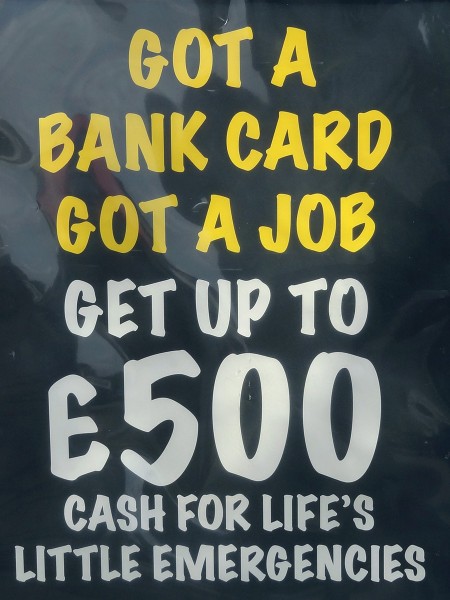 In an apparent U-turn, the Chancellor, George Osborne, has decided to cap the interest rates and other charges on payday loans and other short-term credit. As we have seen in previous news items, the sky-high interest rates which some of the poorest people in the UK are being forced to pay on these loans have caused outrage in many quarters: see A payday enquiry and Kostas Economides and the Archbishop of Canterbury. Indeed, the payday loan industry has been referred by the OFT to the Competition Commission (CC). The CC is required to report by 26 June 2015, although it will aim to complete the investigation in a shorter period.
In an apparent U-turn, the Chancellor, George Osborne, has decided to cap the interest rates and other charges on payday loans and other short-term credit. As we have seen in previous news items, the sky-high interest rates which some of the poorest people in the UK are being forced to pay on these loans have caused outrage in many quarters: see A payday enquiry and Kostas Economides and the Archbishop of Canterbury. Indeed, the payday loan industry has been referred by the OFT to the Competition Commission (CC). The CC is required to report by 26 June 2015, although it will aim to complete the investigation in a shorter period.
It was becoming increasingly clear, however, that the government would not wait until the CC reports. It has been under intense pressure to take action. But the announcement on 25 November 2013 that the government would cap the costs of payday loans took many people by surprise. In fact, the new body, the Financial Conduct Authority, which is due to start regulating the industry in April 2014, only a month ago said that capping was very intrusive, arguing that it could make it harder for many people to borrow and push them into the hands of loan sharks. According to paragraph 6.71 of its consultation paper, Detailed proposals for the FCA regime for consumer credit:
The benefits of a total cost of credit cap has been looked at by the Personal Finance Research Centre at the University of Bristol. This report highlighted that 17 EU member states have some form of price restriction. Their research was ambiguous, on the one hand suggesting possible improved lending criteria and risk assessments. On the other, prices may drift towards a cap, which could lead to prices increasing or lead to a significant reduction in lenders exercising forbearance. Neither of these latter outcomes would be beneficial for consumers. Clearly this is a very intrusive proposition and to ensure we fully understand the implications we have committed to undertake further research once we begin regulating credit firms and therefore have access to regulatory data.
The government announcement has raised questions of how imperfections in markets should be dealt with. Many on the centre right argue that price controls should not be used as they can further distort the market.  Indeed, the Chancellor has criticised the Labour Party’s proposal to freeze gas and electricity prices for 20 months if it wins the next election, arguing that the energy companies will simply get around the freeze by substantially raising their prices before and after the 20 months.
Indeed, the Chancellor has criticised the Labour Party’s proposal to freeze gas and electricity prices for 20 months if it wins the next election, arguing that the energy companies will simply get around the freeze by substantially raising their prices before and after the 20 months.
Instead, those on the centre right argue that intervention should aim to make markets more competitive. In other words, you should attempt not to replace markets, but to make them work better.
So what is the reasoning of the government in capping payday loan charges? Does it feel that, in this case, there is no other way? Or is the reasoning political? Does it feel that this is the most electorally advantageous way of answering the critics of the payday loan industry?
Webcasts and podcasts
 Payday Loans To Be Capped By Government Sky News (25/11/13)
Payday Loans To Be Capped By Government Sky News (25/11/13)
 New law to cap cost of payday loans BBC News, Robert Hall (25/11/13)
New law to cap cost of payday loans BBC News, Robert Hall (25/11/13)
 Osborne: ‘Overall cost’ of payday loans to be capped BBC Today Programme (25/11/13)
Osborne: ‘Overall cost’ of payday loans to be capped BBC Today Programme (25/11/13)
 George Osborne announces cap on payday loan charges amid concerns ITV News (25/11/13)
George Osborne announces cap on payday loan charges amid concerns ITV News (25/11/13)
Articles
UK to cap payday lenders’ interest charges Reuters, Steve Slater, Paul Sandle, Kate Holton and William James (25/11/13)
Capping payday loans: from light touch to strong arm Channel 4 News, Faisal Islam (25/11/13)
Payday loans: New law to cap costs BBC News (25/11/13)
Payday loan ‘risk to mortgage applications’ BBC News (26/11/13)
Q&A: Payday loans BBC News (25/11/13)
George Osborne is playing social democratic catch-up on payday loans The Guardian, Larry Elliott (25/11/13_
Payday loans cap: George Osborne caves in following intervention led by Archbishop of Canterbury Independent, Oliver Wright (25/11/13)
The principle, the practice and the politics of fixing payday loan prices: why? And why now? Conservative Home, Mark Wallace (25/11/13)
George Osborne and the risky politics of chutzpah New Statesman, Rafael Behr (26/11/13)
Chancellor too quick off the mark on payday lending cap The Telegraph, James Quinn (25/11/13)
Crap and courage of convictions: the political problem with Osborne’s payday loan plan Spectator, Isabel Hardman (26/11/13)
Payday loan calculator
Payday loan calculator: how monthly interest can spiral BBC Consumer (7/11/13)
Questions
- What types of market failing exist in the payday loan industry?
- What types of controls of the industry are being proposed by George Osborne?
- What is the experience of Australia in introducing such controls?
- What alternative forms of intervention could be used to tackle the market imperfections in the industry?
- What were the proposals of the FCA? (See paragraph 6.6 in its document, Detailed proposals for the FCA regime for consumer credit.)
- According to a representative example on Wonga’s website, a loan of £150 for 18 days would result in charges of £33.49 (interest of £27.99 and a fee of £5.50). This would equate to an annual APR of 5853%. Explain how this APR is calculated.
- The proposal is to allow a relatively large upfront fee and to cap interest rates at a relatively low level, such as 4% per month, as is the case in Australia. Explain the following comment about this in the Faisal Islam article above: “The upfront fee, in theory, should change the behavioural finance of consumers around taking the loan in the first place (there are ways around this though). So this is an intervention based not on lack of competition, but asymmetries of information in consumer finance.”
- Comment on the following statement by Mark Wallace in the Conservative Home article above: “If overpriced payday loans should be capped, why not overpriced DVDs, sandwiches or, er, energy bills?”
- Compare the relative advantages and disadvantages of George Osborne’s proposal with that of Justin Welby, the Archbishop of Canterbury (see the news item, Kostas Economides and the Archbishop of Canterbury).
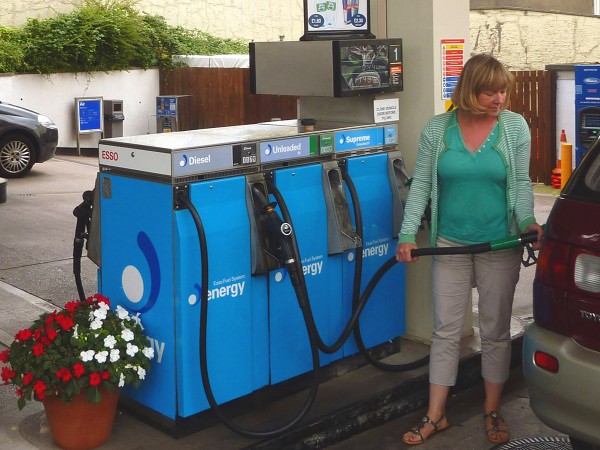 The price of road fuel is falling. Petrol and diesel prices in the UK are now at their lowest level since February 2011. The average pump price for a litre of unleaded petrol has fallen to 130.44p in November – down nearly 8p per litre since September.
The price of road fuel is falling. Petrol and diesel prices in the UK are now at their lowest level since February 2011. The average pump price for a litre of unleaded petrol has fallen to 130.44p in November – down nearly 8p per litre since September.
According to the AA, the reduction in price equates to a fall in the average monthly expenditure on petrol of a two-car family of £14.49 – down from £252.54 to £238.05. This saving can be used for spending on other things and can thus help to boost real aggregate demand. The fall in price has also helped to reduce inflation.
But will lower fuel prices lead to a rise in fuel consumption? In other words, will some of the savings people make when filling up be used for extra journeys? If so, how much extra will people consume? This, of course depends on the price elasticity of demand.
The following articles explain why the price of road fuel has fallen and look at its consequences.
Webcast
 Good news for motorists as fuel prices fall in the East ITN (22/11/13)
Good news for motorists as fuel prices fall in the East ITN (22/11/13)
Articles
November fuel price update Automobile Association (22/11/13)
Finally there is good news for motorists as petrol prices hit lowest level since 2011 The Telegraph, Steve Hawkes (22/11/13)
Petrol prices fall to lowest level for almost three years as strong pound gives motorists relief on the forecourt This is Money, Lee Boyce (22/11/13)
Falling petrol prices boost motorists The Guardian (22/11/13)
Data
Weekly road fuel prices Department of Energy & Climate Change
Europe Brent Spot Price US Energy Information Administration
Spot exchange rate, US $ into Sterling Bank of England
Questions
- Why have the prices of petrol and diesel fallen?
- Illustrate the fall in price of road fuel on a demand and supply diagram.
- How does the size of the fall in price depend on the price elasticity of demand for road fuel?
- If a fall in price results in a fall in expenditure on road fuel, what does this tell us about the price elasticity of demand?
- Why may the price elasticity of demand for road fuel be more elastic in the long run than in the short run?
- If a motorist decides to spend a fixed amount of money each week on petrol, irrespective of the price, what is that person’s price elasticity of demand?
- Using the links to data above, find out what happened to the dollar price of sterling and the Brent crude oil price between September and November 2013.
- How do changes in the exchange rate of the dollar to the pound influence the price of road fuel?
- If the price of oil fell by x per cent, would you expect the price of road fuel to fall by more or less than x per cent? Explain.
- Why do petrol prices vary significantly from one location to another?
 In market capitalism, the stock of manufactured capital provides a flow of output. The profitability of the use of that capital depends on the cost of investing in that capital and the cost of using it, and on the flow of revenues from that capital. Discounted cash flow techniques can be used to assess the profitability of a given investment in capital; the flows of costs and revenues are discounted at a market discount rate to give a net present value (NPV). If the NPV is positive (discounted revenues exceed discounted costs), the investment is profitable; if it is negative, the investment is unprofitable. (See Economics, 8th edition, section 9.3.)
In market capitalism, the stock of manufactured capital provides a flow of output. The profitability of the use of that capital depends on the cost of investing in that capital and the cost of using it, and on the flow of revenues from that capital. Discounted cash flow techniques can be used to assess the profitability of a given investment in capital; the flows of costs and revenues are discounted at a market discount rate to give a net present value (NPV). If the NPV is positive (discounted revenues exceed discounted costs), the investment is profitable; if it is negative, the investment is unprofitable. (See Economics, 8th edition, section 9.3.)
There may be market imperfections in the allocation of investment, in terms of distorted prices and interest rates. These may be the result of market power, asymmetry of information, etc., but in many cases the market allows capital investment to be allocated relatively efficiently.
Natural capital
This is not the case with ‘natural capital’. Natural capital (see also) is the stock of natural resources and ecosystems that, like manufactured capital, yields a flow of goods and services into the future.  Natural capital, whilst it can be improved or degraded by human action, is available without investment. Thus the natural capital of the oceans yields fish, the natural capital of the skies yields rain and the natural capital of forests reduces atmospheric CO2.
Natural capital, whilst it can be improved or degraded by human action, is available without investment. Thus the natural capital of the oceans yields fish, the natural capital of the skies yields rain and the natural capital of forests reduces atmospheric CO2.
Even though some natural capital is owned (e.g. private land), much is a common resource. As such, it is free to use and tends to get overused. This is the Tragedy of the Commons – see, for example, the following news items: A modern tragedy of the commons and Is there something fishy going on?.
Natural capital accounting
But would it be possible to give a value to both the stock of natural capital and the goods and services provided by it? Would this environmental accounting enable governments to tax or subsidise firms and individuals for their use or enhancement of natural capital?
On 21 and 22 November 2013, the first World Forum on Natural Capital took place in Edinburgh. This brought together business leaders, politicians, economists, environmentalists and other scientists to discuss practical ways of taking natural capital into account in decision making. Central to the forum was a discussion of ways of valuing natural capital, or ‘natural capital accounting’. As the forum site states:
Natural capital accounting is a rapidly evolving new way of thinking about how we value the economic benefits we derive from our natural environment. The World Forum on Natural Capital will bring together world-class speakers, cutting edge case studies and senior decision makers from different sectors, in order to turn the debate into practical action.

But if natural capital is not owned, how is it to be priced? How will the costs and benefits of its use be valued? How will inter-generational effects be taken into account? Will firms price natural capital voluntarily if doing so reduces their profits? Will firms willingly extend corporate social responsibility to include corporate environmental responsibility? Will governments be prepared to introduce taxes and subsidies to internalise the costs of using natural capital, even if the effects extend beyond a country’s borders? Will natural capital accounting measure purely the effects on humans or will broader questions of maintaining and protecting environmental diversity for its own sake be taken into account? These are big questions and ones that various organisations are beginning to address.
Despite problems of measurement and incentives, sometimes there are clear economic benefits from careful evaluation and management of natural capital. Julia Marton-Lefèvre is Director General of the International Union for Conservation of Nature (IUCN). According to the first Guardian article below:
Her favourite example of natural capital working in practice comes from Vietnam, where “planting and protecting nearly 12,000 hectares of mangroves cost just more than $1m but saved annual expenditures on dyke maintenance of well over $7m. And that only accounts for coast maintenance: mangroves are also nurseries for fish, meaning livelihoods for fishing and source of nutrients … “
One organisation attempting to value natural capital is The Economics of Ecosystems and Biodiversity project (TEEB). It also looks at what organisational changes are likely to be necessary for the management of natural capital.
Based on data collected from 26 early adopter companies (60% of them with $10 Billion+ revenues each) across several industry sectors this provides real life evidence on the drivers and barriers for natural capital management.
 Pricing the environment is a highly controversial issue. Critics claim that the process can easily be manipulated to serve the short-term interests of business and governments. What is more, where tradable permits markets have been set up, such as the EU’s Emissions Trading Scheme (ETS), prices have often been a poor reflection of social costs and have been open to manipulation. As Nick Dearden, director of the World Development Movement (WDM), says:
Pricing the environment is a highly controversial issue. Critics claim that the process can easily be manipulated to serve the short-term interests of business and governments. What is more, where tradable permits markets have been set up, such as the EU’s Emissions Trading Scheme (ETS), prices have often been a poor reflection of social costs and have been open to manipulation. As Nick Dearden, director of the World Development Movement (WDM), says:
It is deeply ironic that the same financial markets that caused the economic crisis are now seen as the solution to our environmental crisis. It’s about time we learnt that financial markets need to be reined in, not expanded. Pricing these common resources on which people depend for their survival leaves all of us more exposed to the forces of the global economy, and decisions about whether or not to protect them become a matter of accounting.
The measurement of natural capital and setting up systems to internalise the costs and benefits of using natural capital is both complex and a political minefield – as the following articles show.
Articles
Putting a value on nature: Edinburgh conference says business is ‘part of the solution’ Blue & Green Tomorrow, Nicky Stubbs (20/11/13)
Edinburgh forum says putting value on nature could save it BBC News, Claire Marshall (20/11/13)
Natural capital must be the way forward, says IUCN director general The Guardian, Tim Smedley (11/11/13)
Is ‘natural capital’ the next generation of corporate social responsibility? The Guardian, Tim Smedley (7/11/13)
Natural capital accounting: what’s all the fuss about? The Guardian, Alan McGill (27/9/13)
Put nature at the heart of economic and social policymaking The Guardian, Aniol Esteban (1/3/13)
Campaigners warn of dangers of ‘privatised nature’ The Scotsman, Ilona Amos (21/11/13)
Edinburgh conference attempts to ‘privatise nature’ World Development Movement, Miriam Ross (18/11/13)
 Valuing Nature BBC Shared Planet, Monty Don (8/7/13)
Valuing Nature BBC Shared Planet, Monty Don (8/7/13)
Sites concerned with natural capital
World Forum on Natural Capital
TEEB for Business Coalition
International Union for Conservation of Nature
Questions
- How would you define natural capital?
- What are ecosystem services?
- Is social efficiency the best criterion for evaluating the use of the environment? What other criteria could you use?
- How would you set about deciding what rate of discount to use when evaluating the depletion of or enhancement of natural capital?
- How can game theory provide insights into the strategies of both businesses and governments towards the environment?
- What are the arguments for and against attempting to value natural capital and to incorporate these values in decision making?
 The enormous amounts of money broadcasters are willing to pay for the rights to show live football astonish most people. The figures have continued to rise despite the impact of a recession, slow economic growth and static or falling real incomes.
The enormous amounts of money broadcasters are willing to pay for the rights to show live football astonish most people. The figures have continued to rise despite the impact of a recession, slow economic growth and static or falling real incomes.
The deal to broadcast live games in the English Premier League (EPL) for the three seasons from 2007-10 was 65% higher than the agreement that ran from 2004-07. The recession did appear to slow growth down as the contract covering the seasons 2010-13 was only 5% higher than the previous one. However the total size of this deal was still a staggering £1.78billion or approximately £593 million per season. BSkyB was the most successful bidder in all of these auctions for live TV rights and successfully saw off competition from ITV Digital, ESPN and Setanta.
However in the last few years, BT Sport has entered the bidding process and has provided BSkyB with much stronger competition than its previous rivals. As a result, BskyB had to pay £2.3 billion in order to outbid BT Sport in the most recent auction.  The three-year deal beginning in the 2013-14 season gives BSkyB the rights to show 116 lives matches each year. BT Sport also paid £738 million for the rights to show 38 live matches a season. In total this means that the EPL earns approximately £1billion per season from the sale of broadcasting rights in the domestic market – an increase of 70%!
The three-year deal beginning in the 2013-14 season gives BSkyB the rights to show 116 lives matches each year. BT Sport also paid £738 million for the rights to show 38 live matches a season. In total this means that the EPL earns approximately £1billion per season from the sale of broadcasting rights in the domestic market – an increase of 70%!
The Champions and Europa League also auction the rights to broadcast live matches and there was a real shock when BT Sport recently announced that it had secured the exclusive rights to show all 350 live games in these competitions. Once again the figure it paid – just under £900 million for a three-year deal – took most people by surprise. It represented a 125% increase on the previous three-year deal with BSkyB and ITV. What was also surprising was that there was only one round in the sealed bid auction which suggests that BT Sport’s offer was well in excess of the one submitted by BSkyB.
Most of the initial reaction to this new deal has focused on its implications for the number of matches that will be available free to air: i.e. without having to pay for a subscription channel. The BT Sport contract does specify that the Champions League final and at least one match involving each British team will be shown free to air each season. However, this will be a significant reduction in the number of free to air games currently shown by ITV.
The new deal may also have implications for competitive balance in the EPL. This concept was discussed in a previous blog on this New Site Parachute payment problems for the English Football League and refers to how equally the most talented players are distributed amongst the teams in a league. This distribution will be heavily influenced by the degree to which the revenues of the teams in the league vary. Commenting on this latest contract Liverpool’s former managing director Christian Purslow stated that:
The fundamental effect of the BT deal will be additional wealth for England’s big teams. You will now have six teams (Manchester City, Chelsea and Manchester United, Arsenal, Liverpool and Spurs) playing for four Champions league places with the other 14 teams playing for survival. Never again will the likes of Everton, Newcastle or Villa get near the top – the difference in revenues will simply be too great.
To understand this statement one has to examine how the Champions League distributes the revenue it raises back to the teams that participate in the tournament. One part of the distribution mechanism is determined by the sporting performance of the teams in the competition.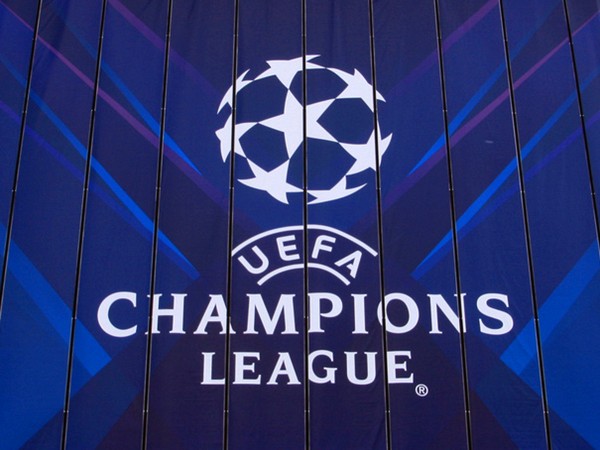 For example all 32 teams that make it to the group stages of the Champions League receive a minimum of €8.6 million. Each win in the group games earns a team an additional €1 million while a draw earns €500,000. The teams that make it to the last 16 receive an additional payment of €3.5 million, the quarter finalists earn an additional €3.9 million while the semi-finalists each receive €4.9 million. For example in the 2012-13 season, Manchester United received prize money of €16.1 million for reaching the last 16, whereas Bayern Munich received €35.9 million of prize money for winning the competition. If broadcasting revenues for the Champions League increase across the whole of Europe then the size of the prizes will almost certainly increase.
For example all 32 teams that make it to the group stages of the Champions League receive a minimum of €8.6 million. Each win in the group games earns a team an additional €1 million while a draw earns €500,000. The teams that make it to the last 16 receive an additional payment of €3.5 million, the quarter finalists earn an additional €3.9 million while the semi-finalists each receive €4.9 million. For example in the 2012-13 season, Manchester United received prize money of €16.1 million for reaching the last 16, whereas Bayern Munich received €35.9 million of prize money for winning the competition. If broadcasting revenues for the Champions League increase across the whole of Europe then the size of the prizes will almost certainly increase.
Teams also receive a share of the broadcasting revenue generated by the Champions League known as the market pool. The total size of the market pool allocated to the teams in any particular country depends on the value of the deal between the broadcasters in that country and UEFA. In the 2012-13 season the total market pool to be divided between the four English teams in the Champions League was €86.6 million. This was the second highest figure behind Italy. In contrast the four Portuguese teams had just over €7 million from the market pool to share between them because the value of the broadcasting deal in that country was so much lower. The market pool is split between the clubs based on (a) their finishing position in the domestic league the previous season and (b) how many games they played in the Champions League from the group stage onwards. FC BATE Borisov were the only representative from Belarus so did not have to share the market pool with any other team. Unfortunately for them the size of the market pool was only €290,000. Manchester United received a market pool payment of €19.45 million.
Given the dramatic increase in value of the broadcasting rights the size of the market pool for the English teams will rise significantly in 2015-16 season. The battle in the 2014-15 EPL season for the four Champions League places will be even stronger and more intense than ever. As a result, the competition for the services of the most talented players will probably push up their wages to ever higher levels.
Monopoly money: Football’s TV war makes the rich unreachable’ BBC Sport (17/11/13)
Champions League TV deal in focus BBC Business (11/11/13)
Champions League: BT Sport wins £897 football rights deal BBC Sport (9/11/13)
Top Soccer Leagues Get 25% Rise in TV Rights Sales, Report Says Bloomberg (11/11/13)
BSkyB could face Premier League premium The Guardian (11/11/13)
Clubs benefit from Champions League revenue UEFA (23/7/13)
Sky pleaded with football officials to reopen champions league talks The Telegraph (11/11/13).
Questions
- What is a sealed bid auction? How does it compare with different types of auctions?
- Suggest some reasons why BT Sport were willing to pay so much more than BSkyB for the broadcasting rights for the Champions League.
- Do you think that the potentially higher revenues for the top clubs might actually reduce attendances at their matches? Explain your answer.
- Explain how the potentially higher future revenues for teams participating in the Champions League in 2015-16 can be discounted in order to give them a present value.
- Draw a diagram to illustrate the impact of the new broadcasting deal on the marginal revenue product of the most talented players.
- Is the labour market for the most talented players competitive or is it an oligopsony? What implications does this have their wages? How does your answer change if the labour market is a bilateral monopoly?
 Growing inequality of income and wealth is a common pattern throughout the world. In the boom years up to 2008, the rich got a lot richer, but at least those on low incomes generally saw modest rises in their incomes. Since 2008, however, the continually widening gap between rich and poor has seen the poor and many on middle incomes getting absolutely poorer.
Growing inequality of income and wealth is a common pattern throughout the world. In the boom years up to 2008, the rich got a lot richer, but at least those on low incomes generally saw modest rises in their incomes. Since 2008, however, the continually widening gap between rich and poor has seen the poor and many on middle incomes getting absolutely poorer. As The Economist article states:
As The Economist article states: Is wealth inequality slowing growth? BBC News, Linda Yueh (21/11/13)
Is wealth inequality slowing growth? BBC News, Linda Yueh (21/11/13) Income Inequality ‘Profoundly Corrosive’ Wall Street Journal, Larry Summers (19/11/13)
Income Inequality ‘Profoundly Corrosive’ Wall Street Journal, Larry Summers (19/11/13)








